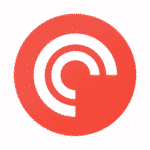The landscape of online search is evolving rapidly. While Search Engine Optimization (SEO) has been a cornerstone of digital marketing for decades, a new player has entered the arena: AI Optimization (AIO). If you’re a business owner trying to stay visible online, understanding both, and how they work together, is crucial for your success.
What Is SEO?
Search Engine Optimization is the practice of making your website more discoverable through search engines like Google, Bing, and others. At its core, SEO is about ensuring the right people find your business when they’re searching for services like yours.
For example, if you run a lawn care business in Cedar Falls, Iowa, you’d want to optimize your website for phrases like “lawn care Cedar Falls” or “lawn care near me” so that when someone in your area searches for those terms, your business appears prominently in the results.
Key elements of SEO include:
- Strategic keyword placement in your content
- Properly optimized images with descriptive alt tags
- Fast page loading speeds
- Mobile-friendly design
- Clean, error-free code
- Proper heading hierarchy (H1, H2, H3, etc.)
- Quality, in-depth content that answers searchers’ questions
Even though Google now displays AI-generated summaries at the top of search results, the traditional search results below those summaries still drive significant traffic. Many users still prefer clicking through to actual websites, and some actively skip AI summaries altogether. SEO isn’t going anywhere—it’s adapting.
What Is AI Optimization (AIO)?
AI Optimization is the practice of making your content discoverable and useful for AI-powered tools like ChatGPT, Claude, Perplexity, and Google’s AI Overviews. Instead of optimizing for traditional search algorithms, AIO focuses on making your content easily digestible for large language models that synthesize information from multiple sources.
Think of it this way: When someone asks ChatGPT for recommendations or information, the AI pulls from various web sources to provide a comprehensive answer. AIO ensures your website is one of those trusted sources that gets cited and referenced.
AIO prioritizes:
- Comprehensive, well-researched content
- Natural, conversational language
- Proper citations and links to reputable sources
- Clear structure and organization
- Depth over keywords
The Crossover: Why Good Content Wins in Both
Here’s the good news: there’s significant overlap between SEO and AIO. If you’ve done SEO correctly—focusing on quality content and user experience—you’ve already laid the groundwork for effective AIO.
Quality Content Is King
Both search engines and AI models can detect content that’s been hastily generated or poorly written. Quality content that provides real value, answers questions thoroughly, and demonstrates expertise will always perform better than thin, keyword-stuffed pages.
Technical Fundamentals Matter
Several technical elements benefit both SEO and AIO:
- Site speed: A fast website ranks better and provides a better user experience
- Mobile optimization: Essential for both human users and crawlers
- Clean code: Fewer errors mean better performance across the board
- Structured data: Schema markup helps both search engines and AI understand your content
- Proper heading hierarchy: Organize your content like a book—one H1 (chapter title) per page, with logical H2s, H3s, etc.
The E-E-A-T Principle
Experience, Expertise, Authoritativeness, and Trustworthiness (E-E-A-T) are valued by both traditional search algorithms and AI models. Demonstrating your knowledge, backing up claims with sources, and providing comprehensive information builds credibility in both realms.
Practical Strategies: How to Optimize for Both
The beauty of the SEO/AIO overlap is that you can optimize for both simultaneously without doubling your workload. Here’s how:
1. Create a Keyword Strategy
Start by identifying 20-50 key phrases that matter to your business. Build a spreadsheet mapping which pages will target which keywords. This gives you a roadmap for creating content that serves both search engines and AI.
2. Write for Humans First
Your content should be conversational and natural. Avoid keyword stuffing—it hurts both SEO and AIO. If your content reads awkwardly or feels forced, you’re doing it wrong.
Bad example: “Lawn care Cedar Falls, Iowa is what we do. Our lawn care Cedar Falls, Iowa services include lawn care Cedar Falls, Iowa maintenance.”
Good example: “We provide comprehensive lawn care services throughout Cedar Falls, Iowa, including mowing, fertilization, and seasonal maintenance to keep your yard looking its best.”
3. Go Deep on Content
Your homepage can be clean and concise, but your service pages, blog posts, and resource pages should provide substantial, valuable information. A clean website that says nothing won’t bring you clients. Aim for depth and thoroughness.
4. Use Citations and Links
Especially for AIO, linking to reputable sources adds credibility to your content. When you make claims or share statistics, back them up with links to authoritative sources.
5. Optimize Your Entire Site Structure
Every page should have:
- One clear H1 tag (your main topic)
- Logical subheadings (H2, H3, etc.)
- Properly optimized images with descriptive alt text
- Fast loading times
- Mobile responsiveness
6. Create Content That Answers Questions
Both SEO and AIO favor content that directly answers user questions. FAQ sections, how-to guides, and comprehensive resource pages perform exceptionally well.
Common Mistakes to Avoid
Ignoring AIO Entirely
Many businesses are still focused solely on traditional SEO. While SEO remains important, ignoring AI optimization means missing out on a growing source of traffic and leads. AI is becoming the new way people discover information—don’t get left behind.
Keyword Stuffing
Cramming keywords into every sentence might have worked in 2005, but it’s counterproductive today. It hurts user experience, damages your SEO, and makes your content less useful for AI platforms.
Over-Optimizing for One at the Expense of the Other
Balance is key. If you focus too heavily on traditional SEO tactics at the expense of natural, conversational content, you’ll hurt your AIO performance (and probably your SEO too).
Not Tracking AI Referrals
Make sure your analytics are set up to track where your traffic comes from, including AI platforms like ChatGPT. Understanding which channels drive traffic helps you make informed decisions about where to invest your efforts.
Why This Matters Now
AI is not a passing trend—it’s a fundamental shift in how people access information online. Just as businesses that ignored the internet in the 1990s or social media in the 2000s fell behind, businesses that ignore AI optimization today risk becoming invisible to a growing segment of potential customers.
AI tools can distill information from dozens of websites into a single, comprehensive answer. For many users, this is faster and more convenient than clicking through multiple search results. If your website isn’t optimized to be included in those AI-generated responses, you’re missing opportunities.
Quick Wins You Can Implement Today
- Audit your heading structure: Make sure each page has one H1 and logical subheadings
- Check your site speed: Use tools like Google PageSpeed Insights to identify performance issues
- Review your content: Is it comprehensive and valuable, or thin and keyword-focused?
- Add alt text to images: Describe what’s in the image while naturally incorporating relevant keywords
- Set up proper analytics: Make sure you’re tracking traffic sources, including AI referrals
Moving Forward
Both SEO and AIO are essential for modern businesses. The good news is that the fundamentals overlap significantly. By focusing on high-quality content, technical excellence, and genuine value for users, you’ll position your website to succeed in both traditional search and AI-powered discovery.
If you haven’t optimized your website for search yet, you’re already behind. And even if you have strong SEO, it’s time to evaluate your AI optimization strategy. The businesses that thrive online will be those that adapt to serve both human searchers and AI systems effectively.
Need Help with Your Website’s SEO and AIO?
At Wapiti Digital, we specialize in creating websites that don’t just look good—they drive real business results. Our approach combines sales-focused design with comprehensive optimization for both traditional search engines and AI platforms.
Whether you need a complete website overhaul, ongoing SEO maintenance, or a strategic assessment of your current digital presence, we’re here to help.








